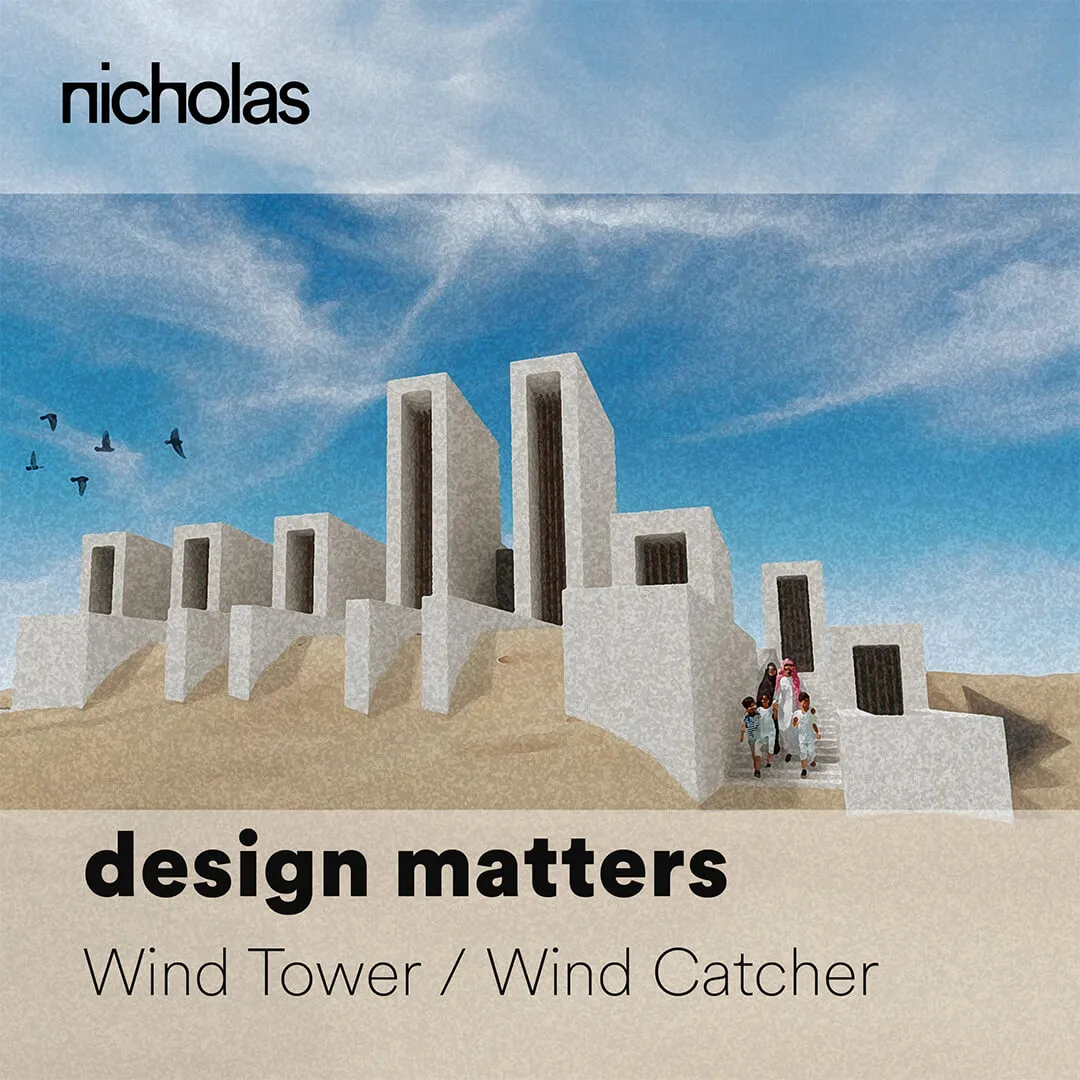
Found in various locations around the Arabian Gulf, the wind catcher, wind tower or wind scoop is an indigenous architectural device used to create cross ventilation and passive cooling in buildings.
Traditionally, air intakes are found on four sides of the tower, rendering its function omnidirectional, although the intake can be made unidirectional by orientating a single opening towards the prevailing wind.
The wind catcher can function in two ways: by drawing air into the building using air pressure; or in reverse, by directing airflow out of the building using buoyancy forces from temperature gradients – generally known as the “stack effect”.
It is possible for these phenomena to work in conjunction, and even to function without wind. Exposing part of the tower to a heat source, such as the sun, and placing the opening on the leeward side will exhaust warmed air out of the building. Air drawn into the windward side can be cooled using heat reservoirs and/or water bodies.
The diurnal temperature cycle means that the night air is generally cooler than the air during the day. This creates additional buoyancy forces which allow buildings with wind catchers to naturally increase their ventilation rates at night.
Functioning without a tower, the tablinum was a connecting space in the ancient Roman house, designed to capture a cross-draft. The air flow through it was driven by a combination of wind pressure, convection and evaporative cooling.
I believe that it’s time to re-introduce these proven techniques to the region’s contemporary buildings – including in a hybrid model, working in conjunction with mechanical air conditioning systems.
Wind catchers can also be introduced outdoors – in gardens, community spaces and the public realm – where an induced breeze creates the impression of lower temperatures.
By combining tradition and technology we are able to implement regenerative strategies, making our environments naturally cooler and creating better outcomes for people and for the planet.